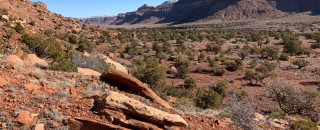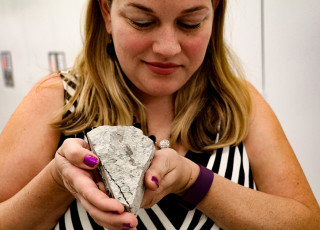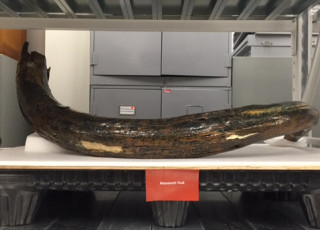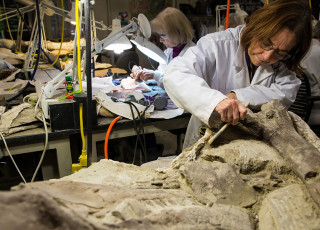You Found a Fossil. Now What?
Utah's deserts boast a wealth of fossil-bearing rock. Credit: Riley Black
By Riley Black
Paleontology is an adventurous science, conjuring up images of tireless experts and volunteers hacking away at ancient stone in order to bring prehistoric wonders back to our Museum. But it’s not just experts who make discoveries. Every year people who wander and explore our amazing state end up stumbling on curiosities that just might be significant fossils. The question is - what happens if you’re lucky enough to find a fossil?
As strong as the urge to dig might be, Natural History Museum of Utah collections manager Carolyn Levitt-Bussian says, the best thing to do is leave the fossil where it is. It doesn’t matter whether it’s a shell, trilobite, dinosaur track, or ancient bone. The geological context of where the fossil is found and how its situated - such as the type of rock it’s in, its geographic location, how its oriented within the rock - is critical to understanding ancient life. Equally important is the land ownership; for private land, you need written permission from the land owner to collect, and there are different laws and regulations governing the collection of fossils from state and federal lands.
So let’s say you’re hiking around our public lands and you spot what looks like a dinosaur bone. What should you do? “The best case scenario for when someone finds an interesting fossil is for them to leave it there, GPS it, and several photos of it,” Levitt-Bussian says. Or, if a GPS is not available, take photos that show the landscape any prominent topographic features in the background, and later try to pinpoint the spot on an app like Google Earth. All of that will be important information for land agencies and museums, like ours, who might be concerned with the protection of the fossil.
And when it comes to taking notes, Levitt-Bussian says, “The more information, the better!” Noting the fossil’s location, size, color, texture, and any other outstanding details will only help experts. And if you make such a find, the museum even has a dedicated page where you can submit your information for review by our paleontologists. This will help ensure that fossils are identified, collected, and cared for in keeping with the professional and ethical standards of the field. In short, to change up a classic tune a little bit, if there’s something strange, and it looks like bone, who you gonna call? The Museum!
Riley Black is the author of Skeleton Keys, My Beloved Brontosaurus, Prehistoric Predators, and a science writer for the Natural History Museum of Utah, a part of the University of Utah in Salt Lake City. Our mission is to illuminate the natural world and the place of humans within it. In addition to housing outstanding exhibits for the public, NHMU is a research museum. Learn more.



